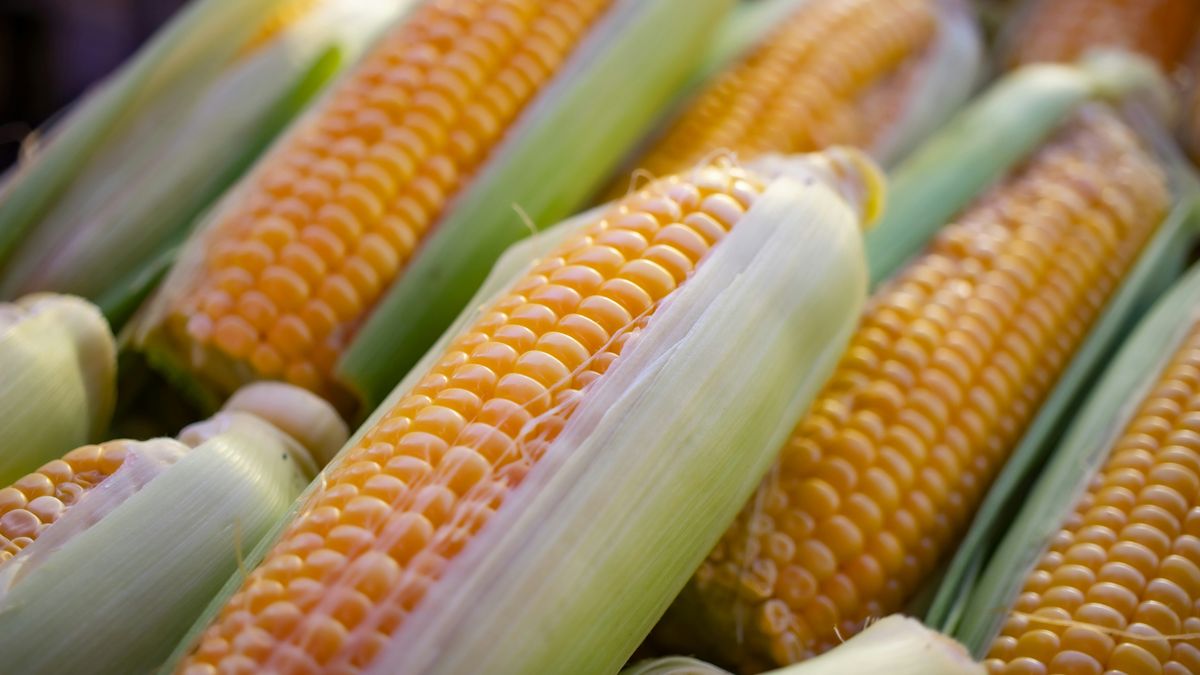
Corn flakes, a common breakfast staple found in pantries worldwide, have a fascinating history and offer a range of nutritional benefits. These plant-based foods are made from processed corn and are primarily consumed during breakfast or as snacks. However, their versatility extends beyond the breakfast table, as they can be used in a variety of culinary applications, such as crispy breading for various dishes.
The history of corn flakes dates back to the 19th century. Interestingly, the creation of corn flakes was a result of a forgotten batch of cooked corn that had gone stale. Despite the corn's rubbery texture, it was passed through rollers in an attempt to create a dough sheet. Instead, they ended up with crushed seeds, which were then toasted to create the first corn flakes.

The initial version of corn flakes was completely natural, with no added sweeteners or spices. However, as they were introduced to a wider audience, additional ingredients were incorporated to enhance their taste and appeal. Despite the adjustments to the original recipe, corn flakes quickly gained popularity and became a globally recognized breakfast food.
Corn flakes belong to the food group that primarily provides complex carbohydrates, making them an excellent source of energy. They also contain substantial amounts of dietary fiber, which aids digestion. However, they offer only minimal amounts of proteins and lipids.
While the overall energy intake from corn flakes is relatively high, the portion sizes are usually moderate, ranging from 30 to 60 grams. Despite their high glycemic index, the rate of digestion and absorption is slowed down when they are consumed with milk or fruit juice.
Corn flakes are often included in low-calorie diets for weight management and diets aimed at reducing high cholesterol levels. However, they are also suitable for individuals with other metabolic conditions, provided they are consumed in appropriate portions. It's worth noting that corn flakes have a significant sodium content, which may be a concern for individuals with high blood pressure or cardiovascular risk. In response to this, low-sodium or salt-free corn flakes have been introduced to the market.
From a nutritional standpoint, corn flakes are rich in iron and calcium. They also offer substantial amounts of thiamine (vitamin B1), niacin (vitamin PP), and riboflavin (vitamin B2). Whole grain corn flakes provide additional benefits, including higher magnesium and dietary fiber content.
In many countries, corn flakes are fortified with essential vitamins and minerals to help address common nutrient deficiencies. Fortification is the process of adding nutrients to foods that may not naturally contain them in significant amounts, and corn flakes are a classic example of this practice in modern food production.
Fortification became common in the mid-20th century, when public health campaigns aimed to reduce widespread nutrient deficiencies, such as anemia and rickets. Breakfast cereals, including corn flakes, were an ideal vehicle because they were widely consumed and could deliver a controlled amount of nutrients in each serving.
Today, fortification is still used to:
The exact nutrients vary by brand and country, but most fortified corn flakes contain some combination of:
These nutrients are added in carefully regulated amounts to meet a portion of daily requirements without exceeding safe levels.
Fortification typically happens after the flakes are cooked and toasted. A fine mist or coating of nutrient powder, often blended with a stabilizing agent, is sprayed onto the cereal. This ensures even distribution and stability during storage. The added nutrients are usually in highly bioavailable forms, meaning the body can absorb and use them effectively.
Fortified corn flakes can contribute meaningfully to daily nutrient intake, especially when eaten with milk, which adds protein and calcium. For some individuals, particularly children and people with limited diets, fortified cereals can help bridge nutrient gaps. However, it’s important to note that corn flakes are often low in fiber and protein, and some brands contain added sugar, which can reduce their overall healthfulness if eaten in excess.
In many countries, cereal fortification is guided by national nutrition policies. Manufacturers must list added vitamins and minerals on the nutrition facts panel. This transparency allows consumers to understand how fortified cereals fit into their overall diet.
While fortification has clear public health benefits, some nutrition experts caution that it should not replace a balanced diet rich in whole grains, fruits, and vegetables. Over-reliance on fortified processed foods may lead to imbalanced nutrient intake. Therefore, corn flakes should ideally be part of a varied, nutrient-dense diet.
While corn flakes are primarily consumed as a breakfast cereal, they can also be used in a variety of other culinary applications. Their crunchy texture makes them an excellent addition to baked goods and a perfect substitute for breadcrumbs in recipes that require a crispy coating. Whether used as a topping for casseroles, a base for granola bars, or a crunchy layer in desserts, corn flakes add a unique texture and flavor to a multitude of dishes.